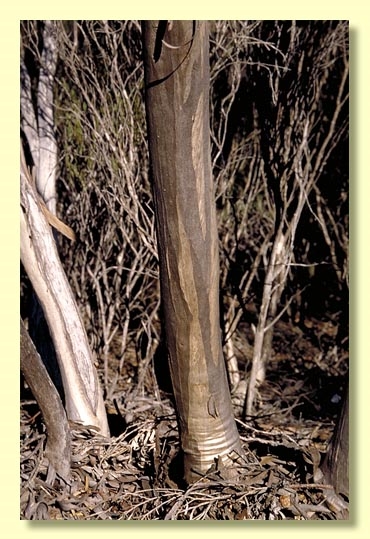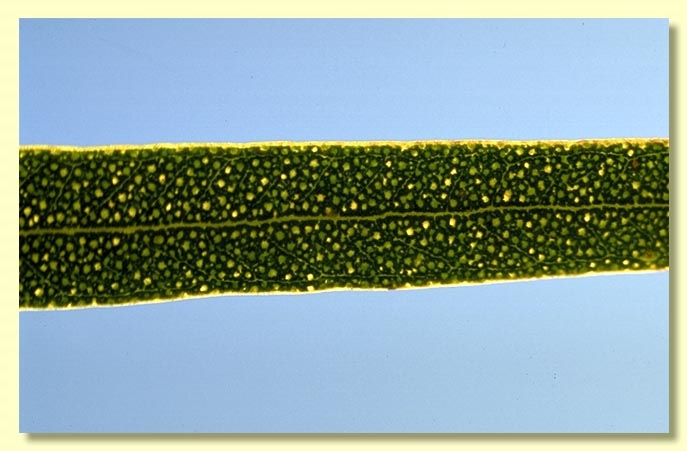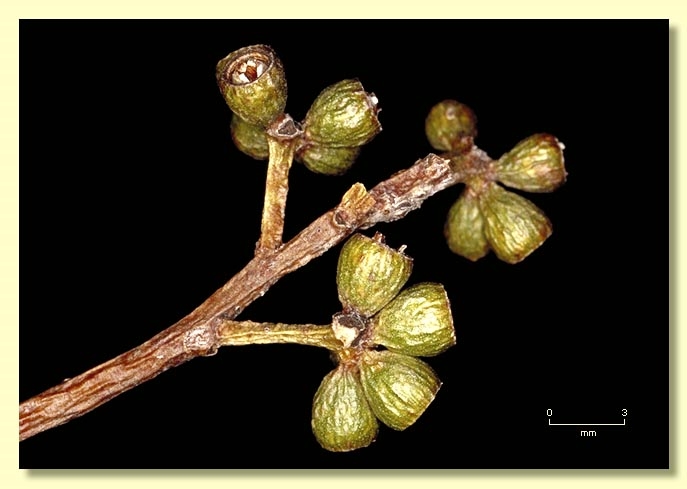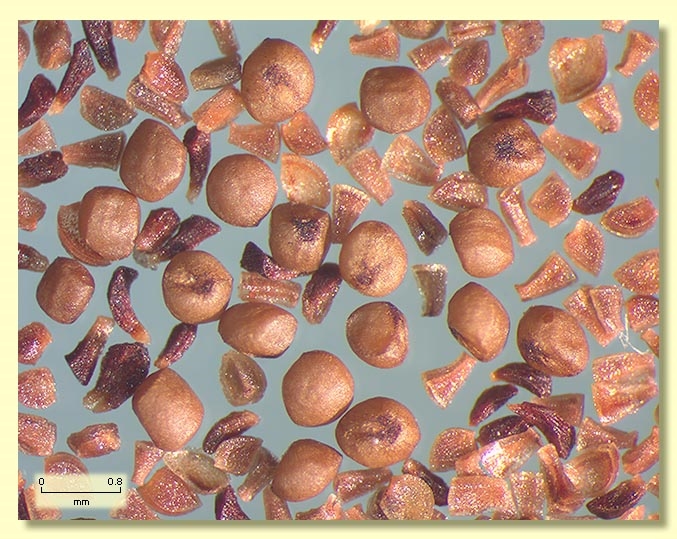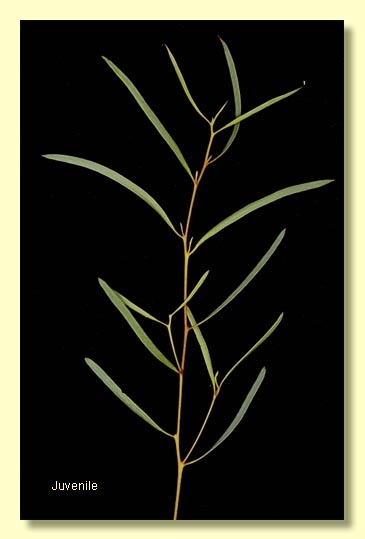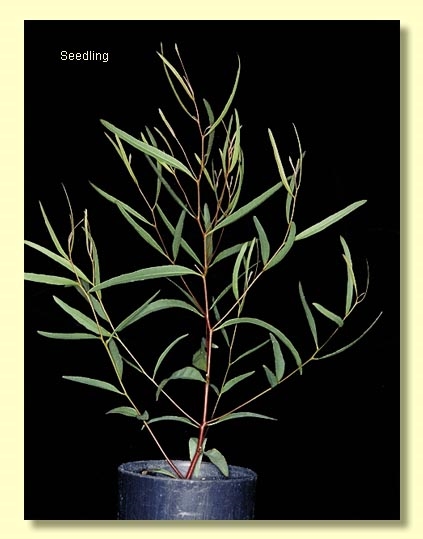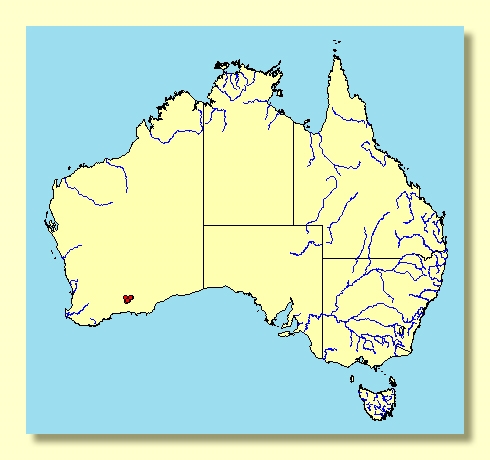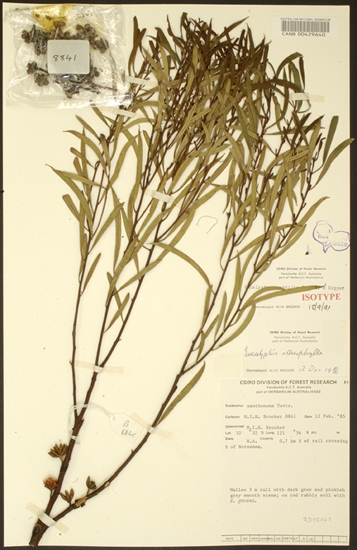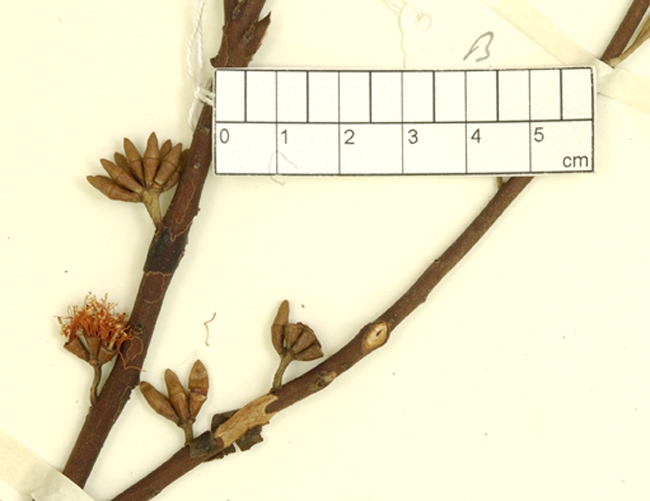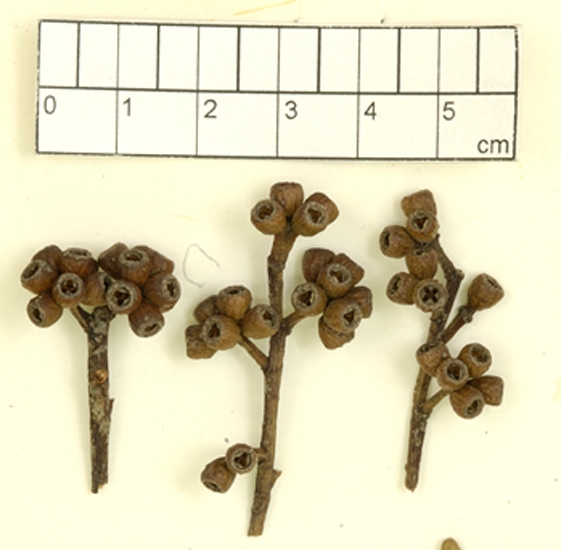Eucalyptus | Symphyomyrtus | Bisectae | Glandulosae | Levispermae | Cubiformes
Euclid - Online edition
Eucalyptus subtilis
Bark wholly smooth, pale orange and grey.
Branchlets with small, clear oil glands in pith.
Juvenile growth (coppice or field seedlings to 50 cm): stems rounded in cross-section; juvenile leaves subsessile to shortly petiolate, opposite for 1 or 2 nodes then alternate, linear, 4.5–8.5 cm long, 0.3–1 cm wide, green to blue-green, dull.
Adult leaves held erect, alternate, petioles 0.3–0.7 cm long; blade linear, 4.5–8 cm long, 0.3–0.7cm wide, base tapering to petiole, margin entire, apex pointed, dull to slightly glossy, green, side-veins acute or obscure, reticulation obscure, intramarginal vein close to margin or obscure, oil glands irregular, island.
Inflorescence axillary unbranched, peduncles widening apically, 0.4–1 cm long, buds ?9 or 11, usually pedicellate, rarely sessile (pedicels 0–0.3 cm long). Mature buds fusiform (0.6–0.8 cm long, 0.2–0.3 cm wide), scar present, operculum conical, only slightly longer than the hypanthium and equal to it in width at the join, all stamens inflexed, anthers oblong, versatile, dorsifixed, dehiscing by longitudinal slits, style long and straight, stigma rounded to blunt, locules 3 or 4, the placentae each with 4 vertical rows of ovules. Flowers cream.
Fruit sessile or shortly pedicellate (pedicels 0–0.1 cm long), usually cupular, less commonly shortly barrel-shaped, 0.4–0.6 cm long, 0.3–0.5 cm wide, disc descending vertically, valves 3 or 4, near rim level.
Seeds brown to straw-coloured, 0.6–1 mm long, sub-spherical and slightly flattened on one side, surface smooth, hilum ventral/terminal.
Cultivated seedlings (measured at ca node 10): cotyledons Y-shaped (bisected); stems rounded in cross-section; leaves subsessile to shortly petiolate, opposite for 4 to 6 nodes then alternate, linear, 4.5–8.5 cm long, 0.3–1 cm wide, green.
Flowering has been recorded in May and September.
A low mallee endemic to Western Australia, found south of Norseman and west to Peak Charles and the 90 Mile Tank, on fine-textured soils in sandplain. The stems are smooth and the adult leaves dull to slightly glossy, light green to olive-green.
Eucalyptus subtilis belongs to Eucalyptus subgenus Symphyomyrtus section Bisectae subsection Glandulosae because the cotyledons are bisected, buds have an operculum scar and the branchlets have oil glands in the pith. Within this subsection E. subtilis is one of a group of 14 species that form series Levispermae subseries Cubiformes, characterised by having smooth almost cuboid to sub-spherical seed (not spherical), flattened peduncles that widen apically and buds that are narrowly fusiform. Within subseries Cubiformes some species have stamens erect, others have stemens variably deflexed, while E. subtilis has stamens inflexed. (Of the species in series Levispermae only E. microschema, E. subtilis and E. desmondensis have stamens inflexed.)
E. subtilis is unlikely to be confused with any other species within its natural range because of its habit, erect narrow adult leaves and small fusiform buds with operculum slightly narrower than the hypanthium at the join. Its closest relative is E. microschema, a species of pale clayey soils from the area between Lake King, Newdegate and Lake Magenta, which differs only slightly in having broader adult leaves and shrubbier habit. All four subspecies of the related E. subangusta have wider seedling leaves than does E. subtilis, and have a blunt, not acute opercula.
E. subtilis might be confused with the very narrow-leaved E. perangusta, from the Lort River to Ravensthorpe area, but this species has intersectional oil glands in the adult leaves and buds with fully inflexed stamens with anthers adnate to the filaments, not versatile.


